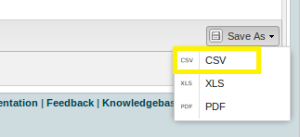License Statistics runs as a service on Windows and as a daemon on Linux.
For more information, see Running License Statistics.
Imported usage reporting lets you import and review log files from a number of license servers, whereas realtime usage reporting allows you to collect realtime data from the license server at configurable time intervals.
Since imported usage reporting doesn't require a connection to the license server, it can be used for:
For more information, see License Statistics Overview and Features.
With License Statistics, you can import existing data from a number of supported log files, including FlexNet (encrypted) report logs. The imported data is 100% accurate and can be used for reliable billing.
License Statistics in real-time mode uses data sampling to gather statistics, which will have small inaccuracies. However, over time, you can easily see a trend, and for most real applications (where users use the application for hours), the results average out. So, while License Statistics' data sampling method is not strictly speaking 100% accurate, it provides real-time reporting and flexibility, and can be run on virtually any license manager.
You can access all License Statistics data for all monitored applications from an online, easy-to-use UI.
You can obtain custom reports of license usage information by running a SQL query on the License Statistics database, using either the License Statistics UI or a command line.
For more information, see Generating custom SQL reports.
This tutorial takes you through the process of enhancing your existing reports with helpful information from other data sources. This is useful when you want to generate more descriptive, user-friendly reports. To do that, you need to be familiar with Microsoft Excel or LibreOffice Calc.
The following steps are designed to extend the Usage Per User report with LDAP information.

SELECT U.Name, CONCAT_WS(" ", FirstName, LastName) as Fullname FROM UserDetails UD INNER JOIN User U ON UD.UserId = U.Id ORDER BY U.Name
Move back to the first sheet, add a new header named "User Details" and paste a VLOOKUP function to every field in this column.
(Note that the syntax of the function may vary depending on whether you're using Excel or LibreOffice Calc.). For example, for Excel 2013 you may use the following syntax:
=VLOOKUP($B2;Sheet2!$A$1:$B$7;2)
VLOOKUP is a function that performs a vertical lookup by searching for specific information located in a sorted table.
Column B from Sheet1 contains username and number 2 indicates the number of the current row.
Range of data indicates data that will be used by VLOOKUP, using cells from column B.
Number 2 indicates the column from Sheet2 for which the matching value must be returned (in this case user's first name and last names).